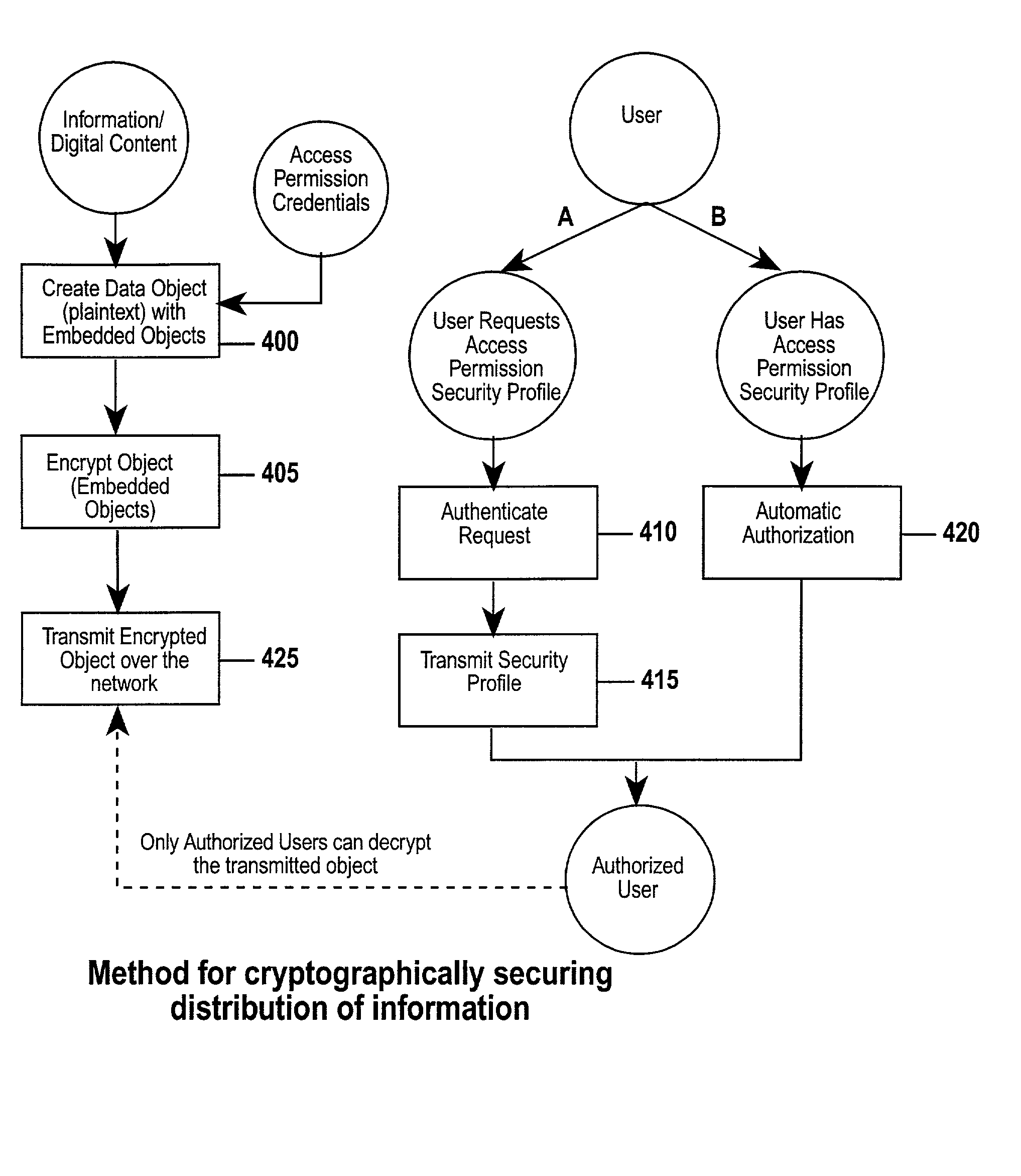Method and apparatus for a web-based application service model for security management
a technology of security management and web application, applied in electrical equipment, digital transmission, securing communication, etc., can solve the problems of pki systems not providing a good one-to-many solution to accessing parts of an information repository, and current pki techniques cannot provide the critical fifth element of electronic security,
- Summary
- Abstract
- Description
- Claims
- Application Information
AI Technical Summary
Benefits of technology
Problems solved by technology
Method used
Image
Examples
Embodiment Construction
[0081] PXa.sup.3 (Precise eXtensible Authentication, Authorization and Administration) allows the distribution of encrypted data objects from a distributor to a broad audience over a decentralized public network, where the distributor knows neither the identity nor the related access permissions of each member of the audience. PXa.sup.3 provides a basis for the secure broadcast and storage of sensitive material over a public network, such as the Internet or a cellular phone network. New members to the audience are authorized according to their credentials, which are assigned to the members by an administrative authority and securely distributed over the public network as well. PXa.sup.3 uses features of existing CKM technology that can take multiple encrypted data objects and encrypt them within another encrypted data object. This "object-within-an-object" feature provides PXa.sup.3 with the ability to selectively decrypt objects according to access permissions previously given to m...
PUM
 Login to View More
Login to View More Abstract
Description
Claims
Application Information
 Login to View More
Login to View More - R&D
- Intellectual Property
- Life Sciences
- Materials
- Tech Scout
- Unparalleled Data Quality
- Higher Quality Content
- 60% Fewer Hallucinations
Browse by: Latest US Patents, China's latest patents, Technical Efficacy Thesaurus, Application Domain, Technology Topic, Popular Technical Reports.
© 2025 PatSnap. All rights reserved.Legal|Privacy policy|Modern Slavery Act Transparency Statement|Sitemap|About US| Contact US: help@patsnap.com



